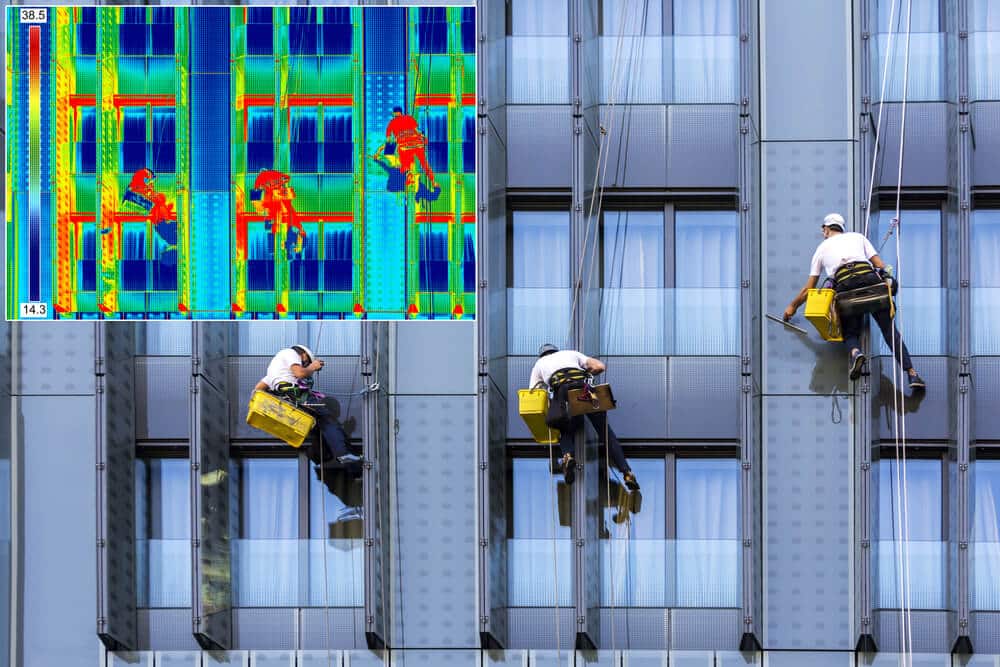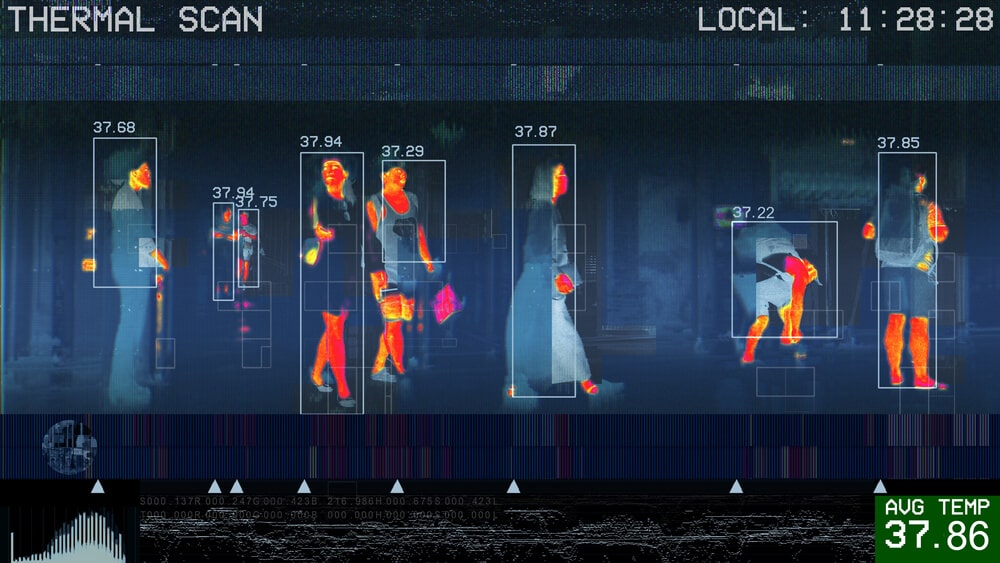As the world returns to work, organizations are taking extra precautions to keep you safe. Between increased sanitation and improved technology, we are all doing our part to contribute to the prevention of COVID – 19. CCS Southwest is partnering with brands to provide cutting edge thermal imaging technology to the markets we serve. Soon, this critical technology will be in most public spaces where many people gather. With over 2 million confirmed cases in the U.S., there is a sense of urgency in using infrared imaging technology. By allowing for early detection and prevention, this technology can save lives.
What Is Thermal Imaging and Why Do We Need It
Infrared thermal imaging technology, also referred to as thermography, is the use of thermographic cameras to detect radiation and translate heat into visible light. These cameras are extremely sensitive to even the slightest difference in temperature and gather radiation from surrounding objects. The image that is produced is called a thermogram and analyzed through the process of thermography.
There are a number of uses for thermal imaging technology, including night vision. Here’s how it is used in everyday life:
- Plumbers – Yes, plumbers use thermal imaging technology to detect leaks through pipes and walls. It is ideal for use on objects that may be out of reach or pose a significant safety risk to a worker.
- Construction technicians – Mechanical and building workers use thermal insulation imaging to find leaks and regulate temperature in buildings. It is also highly effective for analyzing building structures and faults. Heat loss in home structures like windows, doors, HVAC equipment are easily detected by thermal imaging.

- Pest and animal control – Turns out that thermal imaging is highly effective at spotting pets and animals in dark places. It is great for finding termite activity and conducting wildlife surveys.
- Navigation – Thermal imaging is used as an aid in GPS navigation by land and sea, especially during night time transport. You may have noticed the incorporation of infrared thermal imaging technology in cars to help alert drivers to animals or people at night.
- Police and firefighters – This may seem obvious but thermal imaging helps with visibility through smoke and other concealed dangerous environments. Thermal cameras are also used for spot fires so quick intervention purposes. Having maximum visibility during a crime scene at night is very valuable for search and rescue missions. This technology is better than night vision since it doesn’t require ambient lighting and is unaffected by bright lights.
- Science research – Thermal imaging provides incredibly accurate heat patterns. It’s also great for air conditioning installations, mold detection, and quality control.
- Money – This may not seem so obvious but you will be saving a lot of money by purchasing a thermal imaging technology. The amount of leaks, faults, and other potential high maintenance costs you will avoid makes thermal imaging a money saver.
Guide to Choosing the Thermal Imaging Technology That’s Right for You
Now it’s time to choose the right thermal imaging device for you! There are many brands currently available on the market but they are not all appropriate for COVID – 19 screening. There are a few specifics you should consider when choosing one for quick temperature checks:
- Thermal resolution – Those cameras with high thermal resolution are better than those with less. This is determined by the number of pixels or spatial resolution a thermal camera has. The more pixels a camera has, the more accurate it is when measuring the skin surface.
- Smart sensors – Choose cameras with smart sensors with the ability to conduct temperature measurement without the use of a black body. A black body refers to an object that absorbs all incoming light without reflecting any and can be in the form of additional hardware or equipment. Avoid the use of a black body because you can incur additional costs and it can result in accurate temperature readings.
- Lenses – Using a camera with different lenses will provide the operating freedom to use the camera from various angles and distances.
- Accuracy – You want maximum accuracy in using your thermal camera. This translates to .03℃. Remember that other factors can affect the accuracy, including focus, distance, environment, and target emissivity.
- Differentiation – Your thermal camera should be able to differentiate between body temperature and other objects.
- Skin areas – The best thermal cameras can be used for different skin areas like the forehead or corner of an eye. You want the freedom to use the camera wherever you can find the closest temperature reading to the human body core temperature.
- Extra features – A thermal camera that has mask detection or provides demographic information is a plus. There are software applications available that are compatible with the thermal device of your choice
Benefits and Limitations of Thermal Imaging Technology for COVID – 19
These devices contain thermal imaging technology that has been built specifically for COVID – 19 and is meant to be used in public spaces like businesses, hospitals, retail, and other public places. When used effectively, it is able to detect surface skin temperature but it does not definitively determine whether a person has COVID – 19. It’s also much faster than a typical thermometer used on the forehead or mouth. Thermometers also require a close distance, which is not necessary with infrared thermal imaging technology. Science has consistently demonstrated that these devices can be incredibly accurate and useful. These devices are most effective when all of the following are true:
- Used in the right environment and location
- System is properly set up
- Person being assessed is properly prepared
- A person using the device is properly trained
There are some limitations to thermal imaging. For those who are asymptomatic, no fever will be detected and multiple people can’t be tested at the same time. They should not be used for “mass fever screening” in high traffic areas like airports, sporting events, or businesses. Since thermal imaging devices measure skin surface temperature, they should be adjusted to account for the lower temperatures found orally.
 Using the Thermal Imaging Technology
Using the Thermal Imaging Technology
There are certain precautions that should be taken when using the device. While it is recommended to place the device close to entrances where people can be checked quickly, the following steps should be incorporated into preparing the area for the use of thermal imaging:
- Room temperature should be between 68 – 76℃
- Humidity should be between 10 – 50%
- Be aware of other objects that could affect temperature measurement
- Use in room without a draft, away from direct sunlight, and away from radiant heat
- Avoid bright lighting
- Avoid reflective surfaces like mirrors, glass, and metallic surfaces
Talk to Our AV Consultants Today
Looking for a good thermal imaging device? Check out our website for more information on the Tauri Temperature Check Tablets by Aurora that adds an additional layer of protection for your staff. This tablet provides alerts for high temperatures within one second!
Remember, this device should not be used as the sole indicator of COVID – 19. It is strictly for detecting high body temperature with great accuracy. If a fever is detected, it should be followed up by a more diagnostic evaluation for additional symptoms if possible. For now, it is the most accurate option to address public health concerns in the most efficient way possible. Our seasoned consultants can help you choose the right infrared thermal imaging technology for you and your business. Give us a call and schedule a consultation today!

